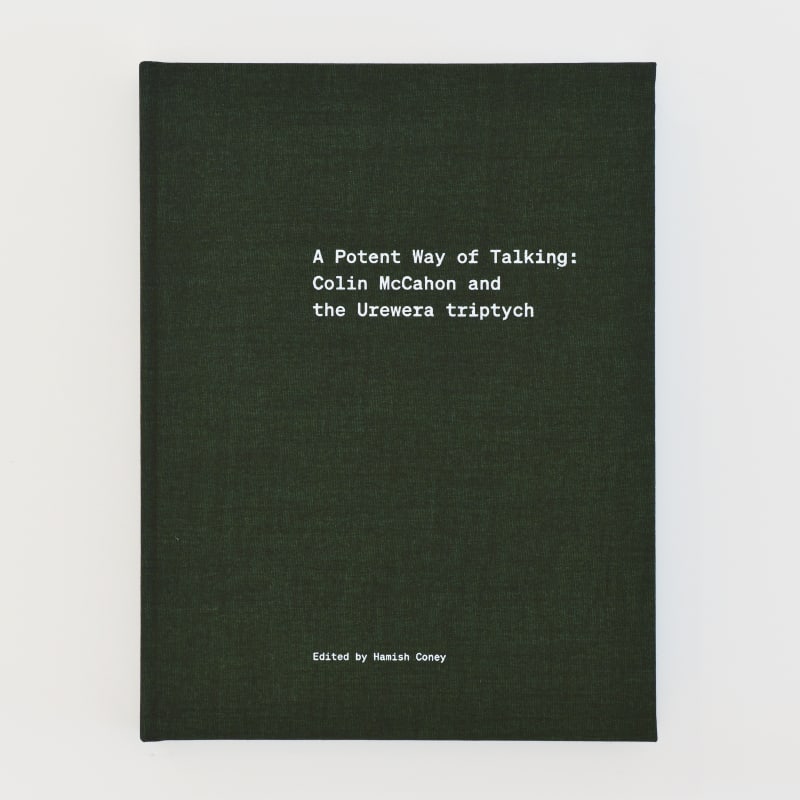NZD $80.00
Published by Arotahi Gallery and Hamish Coney with the assistance of the Rebecca Wilkinson Trust (2025)
Edited by Hamish Coney
Text by Hamish Coney, Laurence Simmons and Linda Tyler, with a feature interview with Gary Langsford
Artwork copyright The Colin McCahon Trust
Design by Philip Kelly
Photographs by David Cook, John Miller, Max Oettli, Peter Quinn, David Straight and Ans Westra
Proofreading services by Marie Shannon
Printing services by INC. Productions
The publisher has generously agreed to donate the proceeds of sales of 50 copies to the Colin McCahon Legacy Project’s fundraising initiative. Learn more about this project here.
ABOUT
In 1974 Colin McCahon was commissioned by the National Parks Board to create a mural to celebrate ‘the mystery of Man in the Urewera’. Soon McCahon and architect John Scott were embroiled in ‘this spiritual thing’ as the artist grappled with Tūhoe history, the legacy of Te Kooti, Rua Kēnana and the limits of his own understanding of Māori spiritual concepts.
Against a backdrop of the Dame Whina Cooper led hīkoi in 1975, McCahon completed the mural which was installed at Āniwaniwa near lake Waikaremona. The subsequent history of the mural is one of the most infamous in all Aotearoa New Zealand art history.
However, the triptych, at the same scale as the mural was McCahon’s first and preferred response to this nation-defining kaupapa. The Urewera triptych is one of McCahon’s great ‘discovery’ paintings and burns with the immediacy of revelation.
A Potent Way of Talking picks up this history from the 2014 Crown apology to Tūhoe for over a century of ‘unjust and excessive behaviour’ and then charts a course deep into the Ureweras to Maungapōhatu, the scorched earth years of the 1860s, the arrest of the prophet Rua Kēnana, the formation of the vast national park and Tūhoe’s attempts to assert their agency as mana whenua. The Parks Board commission of 1974/75 was when all these threads collided as artist and iwi sought to negotiate some resolution on canvas.

